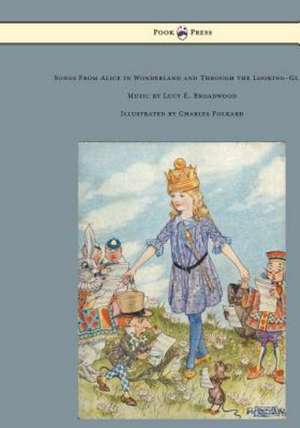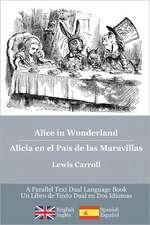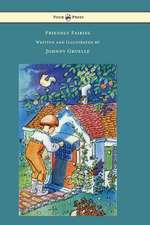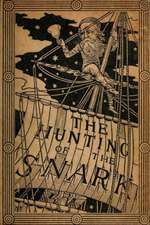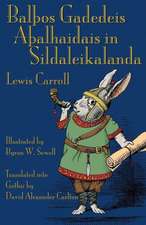Songs from Alice in Wonderland and Through the Looking-Glass - Music by Lucy E. Broadwood - Illustrated by Charles Folkard
Autor Lewis Carrollen Limba Engleză Paperback – 22 apr 2014
| Toate formatele și edițiile | Preț | Express |
|---|---|---|
| Paperback (1) | 127.12 lei 6-8 săpt. | |
| Pook Press – 22 apr 2014 | 127.12 lei 6-8 săpt. | |
| Hardback (1) | 173.49 lei 6-8 săpt. | |
| Pook Press – 22 apr 2014 | 173.49 lei 6-8 săpt. |
Preț: 127.12 lei
Nou
Puncte Express: 191
Preț estimativ în valută:
24.33€ • 26.42$ • 20.43£
24.33€ • 26.42$ • 20.43£
Carte tipărită la comandă
Livrare economică 22 aprilie-06 mai
Preluare comenzi: 021 569.72.76
Specificații
ISBN-13: 9781473312814
ISBN-10: 1473312817
Pagini: 50
Dimensiuni: 216 x 280 x 4 mm
Greutate: 0.22 kg
Editura: Pook Press
ISBN-10: 1473312817
Pagini: 50
Dimensiuni: 216 x 280 x 4 mm
Greutate: 0.22 kg
Editura: Pook Press
Notă biografică
A Tangled Tale is a collection of 10 brief humorous stories by Lewis Carroll (Charles Lutwidge Dodgson), published serially between April 1880 and March 1885 in The Monthly Packet magazine. Arthur B. Frost added illustrations when the series was printed in book form. The stories, or Knots as Carroll calls them, present mathematical problems. In a later issue, Carroll gives the solution to a Knot and discusses readers' answers. The mathematical interpretations of the Knots are not always straightforward. The ribbing of readers answering wrongly - giving their names - was not always well received (see Knot VI below). In the December 1885 book preface Carroll writes: The writer's intention was to embody in each Knot (like medicine so dexterously, but ineffectually, concealed in the jam of our early childhood) one or more mathematical questions - in Arithmetic, Algebra, or Geometry, as the case might be - for the amusement, and possible edification, of the fair readers of that magazine. Describing why he was ending the series, Carroll writes to his readers that the Knots were "but a lame attempt." Others were more receptive: In 1888 Stuart Dodgson Collingwood wrote, "With some people, this is the most popular of all his books it is certainly the most successful attempt he ever made to combine mathematics and humour." They have more recently been described as having "all the charm and wit of his better-known works".
